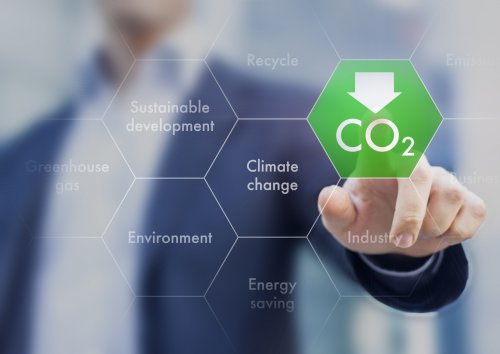In August, the total trading volume on the carbon emissions trading market in China amounted to approximately 48 billion yuan (about $6.6 billion).
This was announced by the Chinese government at a carbon market conference in Shanghai, according to the Xinhua news agency.
However, according to the report, carbon emissions intensity in the country's power sector in 2024 decreased by 10.8 percent compared to 2018. China has also committed to reaching peak carbon emissions by 2030 and carbon neutrality by 2060.
The report contains an official review of China's national carbon market from 2024 to the present:
1) Expansion of the scope of steel application;
2) Scaling up the use of cement;
3) Increase in electrolytic aluminum;
4) Revival of the domestic offset scheme and new policy goals for the development of China's carbon market.
After the market expanded its industry coverage for the first time, the government established more than 1,300 key emission units, and the share of carbon dioxide emissions covered in the national total rose to more than 60 percent.
Addressing oversupply:
The Chinese government announced that it would formally address oversupply in 2024. A total of 5.22 billion allowances were issued to companies (CEA-23), which is slightly less than the confirmed emissions of 5.24 billion (a difference of only 0.55%).
Domestic emission offset credits:
According to expert Mai Duong, Chinese companies returned 6.47 million certified emission reductions (CCERs) to meet their compliance obligations, 74.12% more than the amount used during the 2021-2022 compliance period. However, this is significantly less than the approximately 34 million used during the first compliance cycle (2019-2020) and remains very low compared to actual demand.
China has also signaled plans to develop guidelines for emissions accounting and verification, including a roadmap for including the civil aviation sector in its national ETS.
The expert noted that China's range may be close to complying with Article 6 of the Paris Agreement. China has emphasized that it will continue to actively promote COP negotiations on the implementation of this article. This is one of China's first official statements that clearly indicates its firm willingness to align its domestic credits with Article 6 standards.
We remind EcoPolitic readers that most countries will not be able to triple their renewable energy capacity by 2030, as promised at COP28, according to Ember.
Two years after the agreement to triple global renewable energy capacity by 2030, adopted at the UN Climate Change Conference COP28, national targets have made little progress — overall global ambitions have increased by only 2%.





